
Do you have a question about the Panasonic Lumix DC-GX880 and is the answer not in the manual?
| Megapixel | 16 MP |
|---|---|
| Camera type | MILC |
| Sensor type | Live MOS |
| Image stabilizer | Yes |
| Total megapixels | 16.84 MP |
| Image sensor size | - \ |
| Image formats supported | JPG, RAW |
| Supported aspect ratios | 1:1, 3:2, 4:3, 16:9 |
| Maximum image resolution | 4592 x 3448 pixels |
| Image sensor size (W x H) | 17.3 x 13 mm |
| Image stabilizer location | Lens |
| Still image resolution(s) | 4592x3448, 3232x2424, 2272x1704, 1824x1368, 4592x3064, 3232x2160, 2272x1520, 1824x1216, 4592x2584, 3840x2160, 1920x1080, 1824x1024, 3424x3424, 2416x2416, 1712x1712, 1712x1712 |
| USB version | 2.0 |
| USB connector | Micro-USB B |
| HDMI connector type | Micro |
| Bluetooth | No |
| Wi-Fi standards | 802.11b, 802.11g, Wi-Fi 4 (802.11n) |
| Scene modes | Backlight, Children, Night portrait, Panorama, Portrait, Sports |
| Image editing | Crop, Resizing, Rotating |
| Photo effects | Black&White, Neutral, Sepia, Vivid |
| White balance | Auto, Cloudy, Daylight, Incandescent, Shade |
| Playback modes | Slideshow, Zoom |
| Shooting modes | Aperture priority, Auto, Manual, Movie, Shutter priority |
| GPS (satellite) | - |
| Self-timer delay | 2, 10 s |
| Camera file system | DCF, Exif 2.3, RAW |
| Playback zoom (max) | 16 x |
| On Screen Display (OSD) languages | DEU, ENG, ESP, FRE, ITA, JPN |
| Filter size | 37 mm |
| Digital zoom | 4 x |
| Optical zoom | - x |
| Focal length range | 12 - 32 mm |
| Lens mount interface | Micro Four Thirds (MFT) |
| Maximum aperture number | 22 |
| Minimum aperture number | 3.5 |
| Lens 2 focal length range | 35 - 100 mm |
| Number of diaphragm blades | 7 |
| Number of aspheric elements | 3 |
| Lens 2 maximum aperture number | 4 |
| Lens structure (elements/groups) | 8/7 |
| Maximum focal length (35mm film equiv) | 64 mm |
| Minimum focal length (35mm film equiv) | 24 mm |
| Focus | TTL |
| Focus adjustment | Auto/Manual |
| Auto Focus (AF) points | 49 |
| Auto focusing (AF) modes | Continuous Auto Focus, Contrast Detection Auto Focus, Flexible Spot Auto Focus, Single Auto Focus |
| Closest focusing distance | 0.2 m |
| Normal focusing range (tele) | - m |
| Product color | Black |
| Light metering | Centre-weighted, Evaluative (Multi-pattern), Spot |
| ISO sensitivity | 100, 200, 400, 800, 1600, 3200, 6400, 12800, 25600, Auto |
| Light exposure modes | Aperture priority AE, Auto, Manual, Shutter priority AE |
| ISO sensitivity (max) | 25600 |
| ISO sensitivity (min) | 100 |
| Light exposure control | Program AE |
| Light exposure correction | ± 5EV (1/3EV step) |
| Camera shutter type | Electronic |
| Fastest camera shutter speed | 1/16000 s |
| Slowest camera shutter speed | 60 s |
| Battery voltage | 7.2 V |
| Battery capacity | 680 mAh |
| Battery life (CIPA standard) | 210 shots |
| Operating temperature (T-T) | 0 - 40 °C |
| Operating relative humidity (H-H) | 10 - 80 % |
| Flash modes | Auto, Forced off, Forced on, Slow synchronization |
| Flash sync-speed | 1/50 s |
| Flash exposure correction | ±3EV (1/3 EV step) |
| Video resolutions | 1280 x 720, 1920 x 1080, 3840 x 2160 pixels |
| Video recording time | 60 min |
| Video formats supported | AVCHD, MP4 |
| Maximum video resolution | 3840 x 2160 pixels |
| Audio formats supported | AAC |
| Cables included | AC, USB |
| Memory slots | 1 |
| Compatible memory cards | MicroSD (TransFlash), MicroSDHC, MicroSDXC |
| Field of view | 100 % |
| Display diagonal | 3 \ |
| Display aspect ratio | 3:2 |
| Display diagonal (metric) | 7.5 cm |
| Display resolution (numeric) | 1040000 pixels |
| Depth | 33.3 mm |
|---|---|
| Width | 106.5 mm |
| Height | 64.6 mm |
| Weight | 240 g |
| Lens diameter | 55.5 mm |
| Weight (including battery) | 270 g |
Essential guidelines for handling and protecting the camera body, lens, and monitor.
Identify and understand the purpose of each camera body and lens part.
Guidance on using the dedicated AC adaptor, USB cable, and battery for charging.
Prepare the memory card for recording by formatting it before first use.
Learn how to use the mode dial to select different shooting modes.
Customize buttons to assign frequently used functions for quick access.
Learn to capture images using automatic optimal settings for subject and scene.
Manually set aperture and shutter speed for creative exposure control.
Select scenes to match subject and conditions for optimal auto settings.
Set optimum Focus Mode or Auto Focus Mode for automatic focus adjustment.
Adjust white balance to match the light source for accurate colour reproduction.
Capture burst pictures at high speed and extract desired moments.
Change camera behavior when the shutter button is pressed.
Corrects jitter during recording for stable, clear images.
Instructions on opening, closing, and using the built-in flash for better illumination.
Record high-definition and 4K motion pictures in AVCHD or MP4 formats.
Set continuous autofocus for motion picture recording to maintain focus.
Navigate and view still pictures stored on the camera or memory card.
Instructions for deleting single or multiple pictures from the camera or memory card.
Settings for aspect ratio, pixels, 4K Photo, and recording aspects.
Customize unit operations, screen display, and button functions.
Configure camera settings like clock, beep tones, Wi-Fi, and system preferences.
Settings for protection, cropping, print settings, and image organization.
Remotely control camera, play back images, or save them via a smartphone app.
Step-by-step guide to establish a direct connection without a password.
Transfer pictures and motion pictures from the camera to a computer.
Send images to SNS or use Cloud Sync Service via 'LUMIX CLUB'.
Connect camera to TV for 4K playback or save 4K videos to PC/recorder.
View camera images on a TV screen using an HDMI micro cable.
Acquire pictures and videos from the camera to a PC.
Use a 3D interchangeable lens to capture and view 3D images.
Information on optional accessories like AC adaptors, DC couplers, and filters.
Record and play back without battery worries using AC adapter and DC coupler.
Overview of indicators and information shown on the recording screen.
Common messages and error solutions for camera issues.
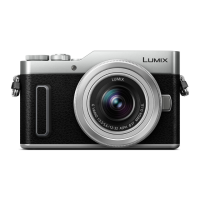

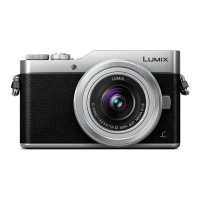
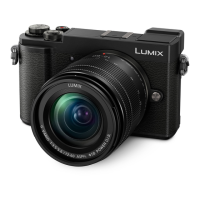
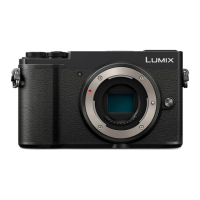
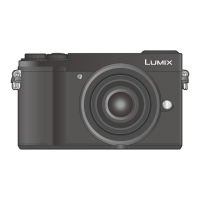

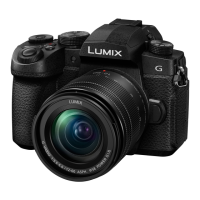
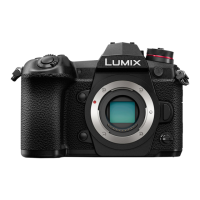
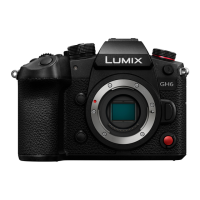

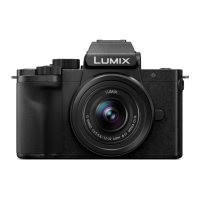
